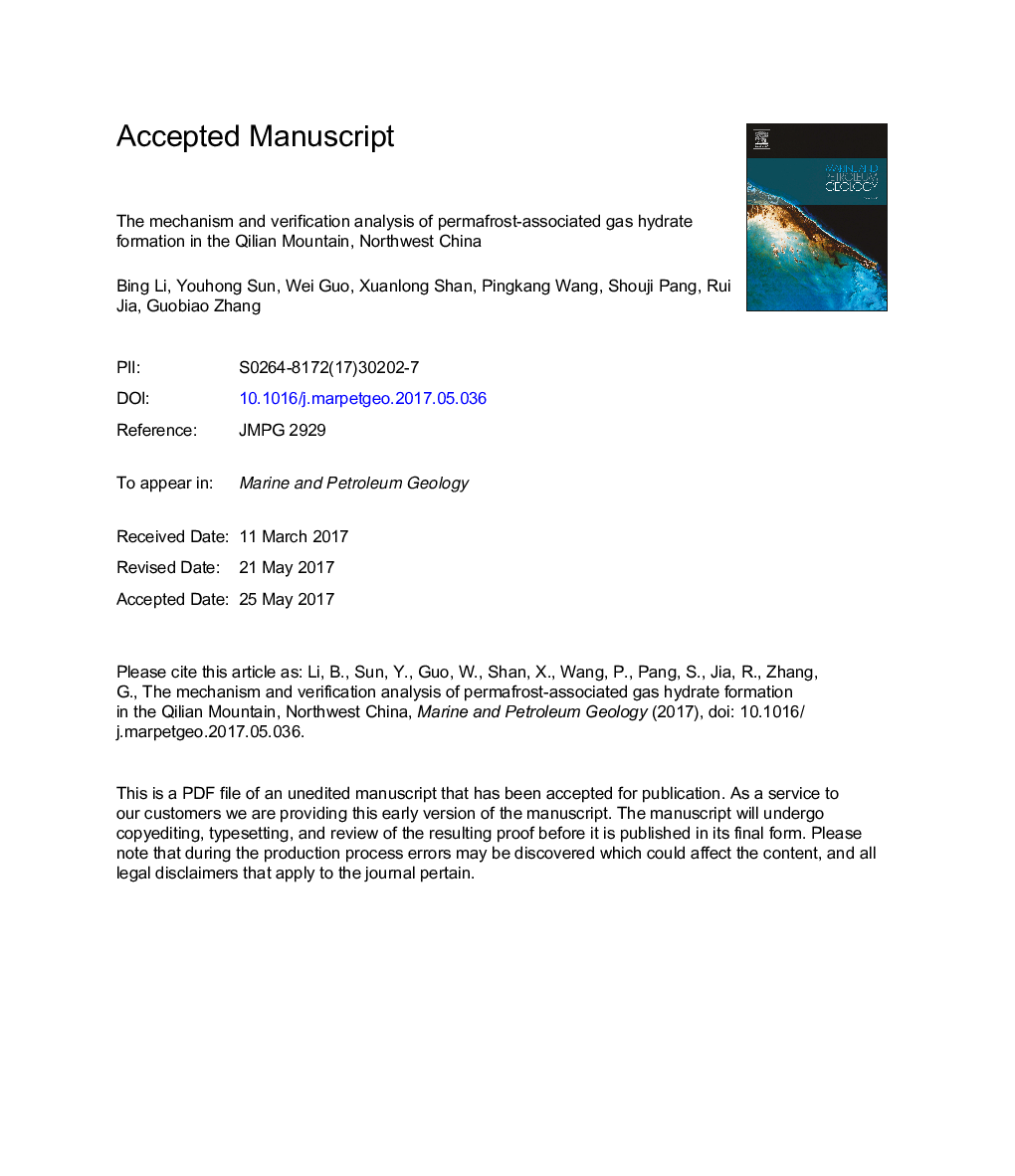| Article ID | Journal | Published Year | Pages | File Type |
|---|---|---|---|---|
| 5782005 | Marine and Petroleum Geology | 2017 | 37 Pages |
Abstract
Muri Basin in the Qilian Mountain is the only permafrost area in China where gas hydrate samples have been obtained through scientific drilling. Fracture-filling hydrate is the main type of gas hydrate found in the Qilian Mountain permafrost. Most of gas hydrate samples had been found in a thin-layer-like, flake and block group in a fracture of Jurassic mudstone and oil shale, although some pore-filling hydrate was found in porous sandstone. The mechanism for gas hydrate formation in the Qilian Mountain permafrost is as follows: gas generation from source rock was controlled by tectonic subsidence and uplift--gas migration and accumulation was controlled by fault and tight formation--gas hydrate formation and accumulation was controlled by permafrost. Some control factors for gas hydrate formation in the Qilian Mountain permafrost were analyzed and validated through numerical analysis and laboratory experiments. CSMGem was used to estimate the gas hydrate stability zone in the Qilian permafrost at a depth of 100-400Â m. This method was used to analyze the gas composition of gas hydrate to determine the gas composition before gas hydrate formation. When the overlying formation of gas accumulation zone had a permeability of 0.05Â ÃÂ 10â15Â m2 and water saturation of more than 0.8, gas from deep source rocks was sealed up to form the gas accumulation zone. Fracture-filling hydrate was formed in the overlap area of gas hydrate stability zone and gas accumulation zone. The experimental results showed that the lithology of reservoir played a key role in controlling the occurrence and distribution of gas hydrate in the Qilian Mountain permafrost.
Related Topics
Physical Sciences and Engineering
Earth and Planetary Sciences
Economic Geology
Authors
Bing Li, Youhong Sun, Wei Guo, Xuanlong Shan, Pingkang Wang, Shouji Pang, Rui Jia, Guobiao Zhang,
